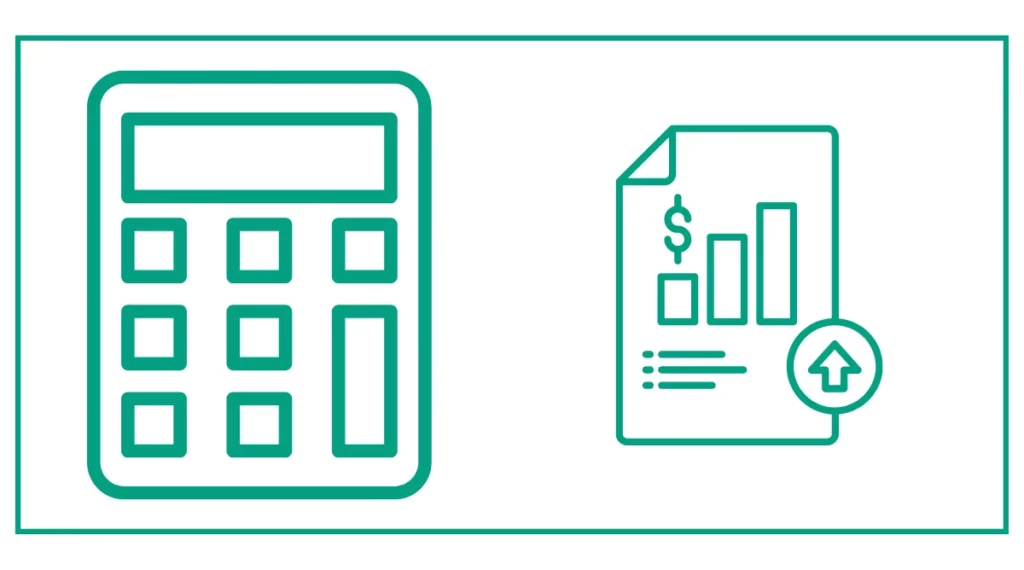Marginal Revenue Calculator
Do you want to calculate how much your revenue has increased after producing or selling the additional units?
The marginal revenue calculator helps you calculate how much your revenue increased, considering the total revenue and quantity change.
The idea of marginal revenue (MR) is used in business to maximize profits. Marginal revenue is the amount of money made for each extra unit sold compared to the marginal cost of that unit (MC).
This helps businesses balance how much they make and how much it costs to make the most money.

You might also want to determine Lifo or extra consumer surplus.
In the world of business and economics, understanding and calculating marginal revenue is crucial for making informed decisions about production and pricing. This marginal revenue calculator provides a simple yet powerful way to determine the additional revenue generated from selling one more unit of a product or service. Let’s explore how this tool works and why it’s essential for businesses of all sizes.
Understanding Marginal Revenue
Marginal revenue is the incremental increase in revenue that results from selling an additional unit of a product or service. It’s a key concept in economics and business strategy, as it helps companies determine the optimal level of production and pricing to maximize profits.
To calculate marginal revenue, you need to know the change in total revenue and the change in quantity sold. The formula for marginal revenue is:
Marginal Revenue = Change in Total Revenue / Change in Quantity
For example, if a company’s total revenue increases by $100 when they sell 10 more units, the marginal revenue would be $10 per unit ($100 / 10 units).
How to Use the Marginal Revenue Calculator?
Our marginal revenue calculator simplifies the process of determining the additional revenue generated from selling one more unit. Here’s how to use it:
- Enter the change in total revenue in the first input field.
- Enter the change in quantity in the second input field.
- Click the “Calculate” button.
- The calculator will display the marginal revenue in the third input field.
This tool streamlines the calculation process, allowing you to quickly analyze different scenarios and make data-driven decisions.
The Importance of Calculating Marginal Revenue
Understanding and calculating marginal revenue is essential for several reasons:
- Profit Maximization: By comparing marginal revenue to marginal cost, businesses can determine the optimal level of production to maximize profits.
- Pricing Strategies: Marginal revenue helps companies set prices that balance revenue generation with market demand.
- Production Planning: Analyzing marginal revenue allows businesses to make informed decisions about increasing or decreasing production.
- Market Analysis: Changes in marginal revenue can indicate shifts in market conditions or consumer behavior.
Marginal Revenue and Market Structures
The behavior of marginal revenue varies depending on the market structure in which a company operates:
- Perfect Competition: In this market structure, marginal revenue equals the market price and remains constant as quantity increases.
- Monopoly: For a monopoly, marginal revenue decreases as quantity increases, and it’s always less than the market price.
- Oligopoly and Monopolistic Competition: In these market structures, marginal revenue typically decreases as quantity increases, but the rate of decrease depends on various factors such as product differentiation and competitor behavior.
The Relationship Between Marginal Revenue and Total Revenue
Understanding the relationship between marginal revenue and total revenue is crucial for businesses:
- When marginal revenue is positive, total revenue is increasing.
- When marginal revenue is zero, total revenue has reached its maximum point.
- When marginal revenue is negative, total revenue is decreasing.
This relationship helps businesses identify the point at which they should stop increasing production to avoid diminishing returns.
Marginal Revenue vs. Average Revenue
While marginal revenue focuses on the additional revenue from selling one more unit, average revenue represents the revenue per unit sold. In a perfectly competitive market, marginal revenue equals average revenue. However, in other market structures, marginal revenue is typically less than average revenue.
Understanding the difference between these concepts helps businesses make more informed decisions about pricing and production levels.
Practical Applications of Marginal Revenue Analysis
Businesses can use marginal revenue analysis in various ways:
- Product Line Expansion: By calculating the marginal revenue of adding new products, companies can determine if expanding their product line is profitable.
- Sales Forecasting: Analyzing marginal revenue trends can help predict future sales and revenue growth.
- Resource Allocation: Companies can use marginal revenue data to decide where to allocate resources for maximum profitability.
- Pricing Optimization: By understanding how marginal revenue changes with different pricing strategies, businesses can optimize their pricing for maximum profit.
Limitations of Marginal Revenue Analysis
While marginal revenue is a powerful concept, it’s important to be aware of its limitations:
- Simplification: Marginal revenue analysis assumes a linear relationship between quantity and revenue, which may not always be the case in real-world scenarios.
- Short-Term Focus: Marginal revenue focuses on short-term changes and may not account for long-term market trends or strategic considerations.
- Data Requirements: Accurate marginal revenue calculations require precise data on revenue and quantity sold, which may be challenging to obtain in some situations.
Integrating Marginal Revenue with Other Financial Metrics
To get a comprehensive view of a business’s financial performance, it’s essential to consider marginal revenue alongside other key metrics:
- Marginal Cost: Comparing marginal revenue to marginal cost helps determine the profit-maximizing level of production.
- Break-Even Point: Understanding marginal revenue can help businesses calculate their break-even point more accurately.
- Price Elasticity of Demand: Analyzing how marginal revenue changes with price adjustments can provide insights into the price elasticity of demand for a product or service.






